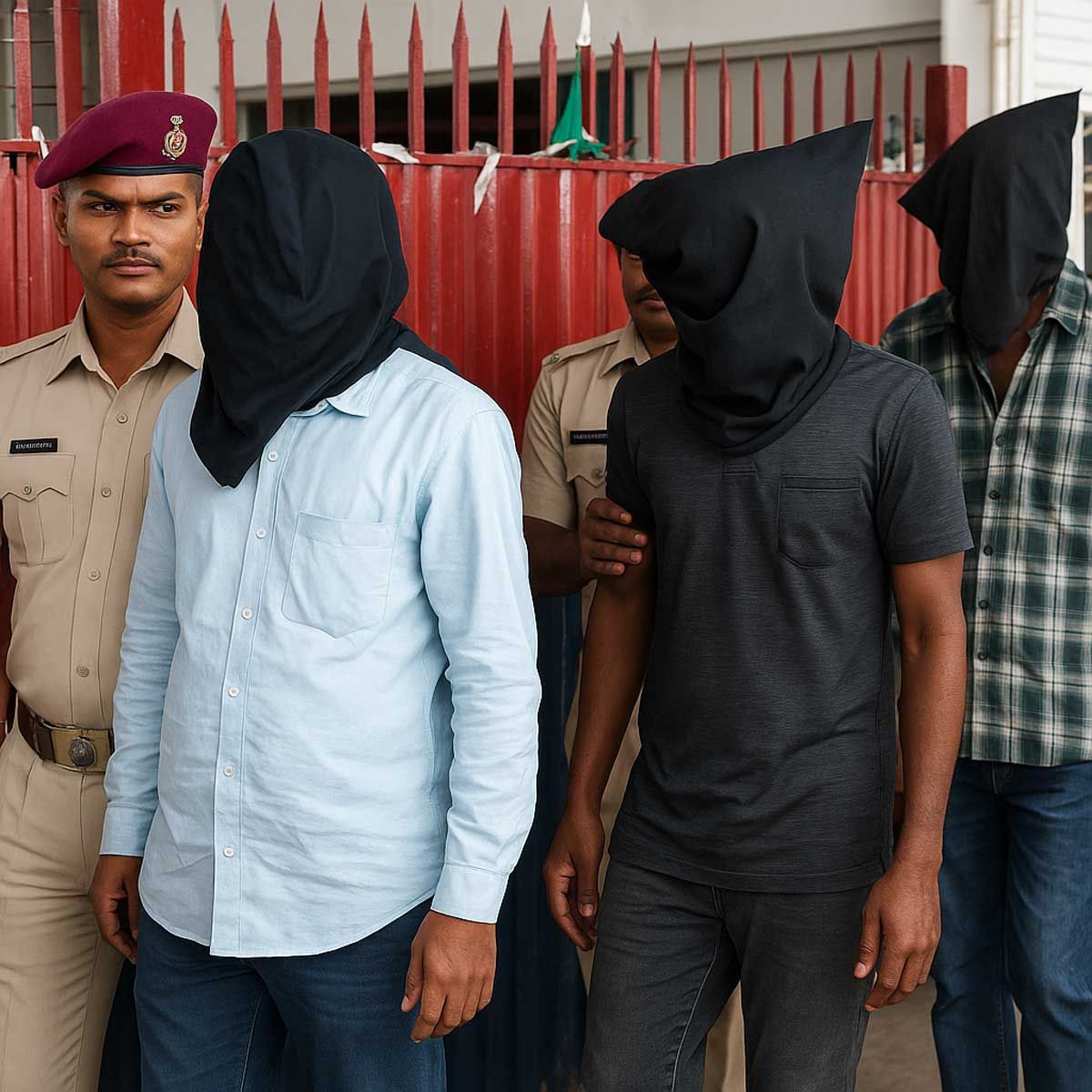More Coverage
Twitter Coverage
Satyaagrah
Written on
Satyaagrah
Written on
Satyaagrah
Written on
Satyaagrah
Written on
Satyaagrah
Written on
JOIN SATYAAGRAH SOCIAL MEDIA
Indian Army pacing towards self-reliance under 'Atmanirbhar Bharat Abhiyaan’ campaign: Indigenisation of defence manufacturing is helping to build a new and strong India to keep neighbour aggression in check

The foreign aggressions and wars remain in the collective memory of every Indian as a reminder of sacrifices made by our freedom fighters and soldiers. While we are indebted to the Indian Army, Air force, and Navy for protecting our sovereignty, integrity, and national interests, the role of the Indian Army is paramount, keeping in mind that any confrontation with either neighbour – China or Pakistan – will be mainly fought by Indian ground forces.
Thus, the Indian army plays a significant role in preventing the belligerence of enemies at our borders. For instance, in 2020, when we had witnessed Chinese aggression at Galwan valley, it was the Indian army who gave a befitting response to the Chinese aggression.
As rightly said by former Prime Minister Atal Bihari Vajpayee, “We can choose our friends but not our neighbours”, the possibility of aggression from China and Pakistan is unavoidable. Therefore, it is inevitable for India to strengthen and modernize its defence forces so as to prepare itself against any kind of expansionism, and cement its presence as a regional superpower in South Asia. Against this background, this article attempts to reflect on the indigenization process of the Indian Armed Forces, particularly the Indian Army.
While indigenization of the Indian Army is critical for national security, it also keeps intact the technological expertise within the borders and is evidently needed to boost the strategic capabilities. It also helps in employment generation and acts as a catalyst to nationalism and patriotism. It will not only solidify the trust and confidence of Indian forces but will also bolster a sense of integrity and sovereignty. In this context, when we talk about Atmanirbhar Bharat, the legacy of Lokmanya Tilak’s economic nationalism is reflected in the initiative launched by Prime Minister Narendra Modi. Considering the vast potential of India in various sectors, this unique initiative, the ‘Atmanirbhar Bharat Abhiyaan’ campaign not only aims to make India a self-reliant country from economic perspectives but in all spheres including defence.
 |
In order to make this campaign more efficient and result-oriented, which ultimately helps in making India a manufacturing hub and self-sustained country, initiatives like Digital India Mission and Make in India are accelerating the desired changes in manufacturing sectors. Since the launch of this flagship campaign, the government of India has made several bold reforms in various sectors which also include defence areas, to achieve self-reliance in defence manufacturing.
Against this context, the Ministry of defence has already scrapped multiple defence import projects in a bid to promote the Atmanirbhar Bharat initiative. These projects will be further provided to the Indian private defence manufacturers. This decision from the central government comes at a time when the Centre is finalizing the new Defence Production and Export Promotion Policy which will pave the way ahead for boosting defence production within the country and help facilitate their export to friendly foreign countries.
Besides, the Defence Ministry has also approved proposals worth Rs 7,965 crore for modernization of the Armed Forces under ‘Make in India’. Furthermore, Defence Ministry in its statement said, “All of these proposals (100 percent) are under ‘Make in India’ with focus on design, development, and manufacturing in India”. According to the Minister of Defence, Rajnath Singh, in the past seven years, India has exported defence-related products worth Rs 38,000 crore, now the government wants to achieve the defence export target of Rs 35,000 crore by 2024-25, adding that the country is exporting defence equipment to around 70 countries.
 |
He further mentioned that the country will soon become a state-of-the-art technology provides not only for the Indian armed forces but for the world. More recently, the Philippines has approved a $374.96 million contract for the purchase of a shore-based anti-ship variant of the BrahMos missile from India. This is the first export order of the BrahMos supersonic cruise missile system which is jointly developed by India and Russia.
If we talk about the indigenization of the Indian Army, the ongoing indigenization process is running at full pace. Earlier, India had stopped imports of 101 weapons and platforms including sniper rifles, towed artillery guns, surface-to-air missiles, howitzers, bullet-proof jackets, radar warning receivers, missile defence systems, helicopters among others. Under the able leadership of former Chief of Defence Staff late Gen. Bipin Rawat, the self-reliance in all three wings of Indian armed forces, air, naval, and land was of utmost importance, he was a strong votary of self-reliant India and was instrumental in starting indigenous production of many arms and equipment within India.
The induction of Indian-made artillery and weapons is one of the key reasons behind the growth of the Indian defence manufacturing environment. Underlining the country’s progress in the field of indigenous production of defence systems and mechanisms, Chief of Army Staff, General Manoj Mukund Naravane said that the Indian Army has been undergoing full-fledged modernization and the Armed Forces have been increasingly looking at indigenous solutions for its operational needs. In December 2020, the Ministry of Defence cleared the induction of 180 Arjun Mark-1A tanks in the Indian Army. These battle tanks are indigenously produced by the Defence Research & Development Organization (DRDO).
In this regard, the Indian private companies are now getting the desired recognition in defence manufacturing. Companies like Larsen and Toubro, Bharat Forge, and Mahindra are getting contracts from the government on a priority basis. Earlier, the defence wing of Larsen & Toubro had been awarded an important contract by the Ministry of Defence for the supply of four regiments of Pinaka weapon systems which have been already deployed at the China front, significantly strengthening the defence capabilities of the Indian Army. The TATA Group, Bharat Forge, and Mahindra Defence are making heavily armoured protection vehicles for the Indian Army to ensure better mobility and protection for infantry soldiers.
The Indian Army has also ordered an advanced version of the ‘SWITCH tactical UAV’ drone, indigenously developed by an Indian company, ideaForge. These specialized drones are made to operate in high-altitude areas like Ladakh and Kashmir. Moreover, to give a further thrust to the Indian defence ecosystem, the State-owned Ordnance Factory Board (OFB) has been split into seven different companies which will work in seven different areas. It is pertinent to mention that the new Defence PSUs are 100 percent government-owned corporate entities which will help in improving the country’s self-reliance in defence preparedness.
 |
If the Indian government continues with the same spirit of modernizing the defence forces with the help of indigenization, it will certainly bring big changes on the ground, preparing the land force for any sort of threats posed by potential adversaries. Given the defence export potential of India, indigenization can also give a big boost to the Indian economy. The efforts of the involved stakeholders, policymakers, and successful implementation of the self-indigenization campaign will be pivotal in realizing this dream.
It may be noted that with proper support and assistance of the Government, the manufacturers will be able to fulfill the demands of armed forces, and will also strengthen their position to confront the challenges/ threats effectively. As India is moving forward with the unique Atmanirbhar Bharat campaign, it can help facilitate the need of being battle-ready, even on any sort of sudden attacks. Undoubtedly, the concept of Atmanirbharta envisioned by PM Modi will certainly help to build a new and strong India.
References:
opindia.com - Saurabh Dwivedi
 Support Us
Support Us
Satyagraha was born from the heart of our land, with an undying aim to unveil the true essence of Bharat. It seeks to illuminate the hidden tales of our valiant freedom fighters and the rich chronicles that haven't yet sung their complete melody in the mainstream.
While platforms like NDTV and 'The Wire' effortlessly garner funds under the banner of safeguarding democracy, we at Satyagraha walk a different path. Our strength and resonance come from you. In this journey to weave a stronger Bharat, every little contribution amplifies our voice. Let's come together, contribute as you can, and champion the true spirit of our nation.
 |  |  |
| ICICI Bank of Satyaagrah | Razorpay Bank of Satyaagrah | PayPal Bank of Satyaagrah - For International Payments |
If all above doesn't work, then try the LINK below:
Please share the article on other platforms
DISCLAIMER: The author is solely responsible for the views expressed in this article. The author carries the responsibility for citing and/or licensing of images utilized within the text. The website also frequently uses non-commercial images for representational purposes only in line with the article. We are not responsible for the authenticity of such images. If some images have a copyright issue, we request the person/entity to contact us at This email address is being protected from spambots. You need JavaScript enabled to view it. and we will take the necessary actions to resolve the issue.
Related Articles
- A major boost to India’s defence system, the Philippines has accepted BrahMos Aerospace Pvt Ltd’s proposal worth USD 374.9 million: India’s proposal to supply Brahmos anti-ship Missile System gets green signal
- India successfully carried out the test firing of a new missile of the Agni series known as Agni-Prime
- Explained: China’s Village Construction In Bhutan’s Territory And What It Wants To Achieve With This Creeping Invasion
- Rahul Gandhi schooled by Externals Affair Minister Dr. S Jaishankar of history lessons and is condemned by Law Minister Kiren Rijiju for his remarks on the judiciary and Election Commission
- Srinagar: Top LeT commander, 1 Pakistani terrorist killed in encounter, AK-47s recovered
- Giving out a clear message to China, Northern Army Commander Lt Gen YK Joshi says ‘Operation Snow Leopard still on, troops on alert’ amid talks between India and China regarding disengagement in Ladakh are underway
- India’s first Chief of Defence Staff General Bipin Rawat dies in helicopter crash: All you need to know
- Kashmir humiliates Pakistan and gives cold shoulder to Pakistan sponsored ‘Kashmir Solidarity Day’ as no public speeches, rallies on the eve from the public or separatist movements or any special prayers in mosques
- Defence Minister Rajnath Singh says that BrahMos missile is to ensure no country has the nerve to cast an evil eye on India
- Twitter rewards an Islamist org, set to be banned by India, with a verified blue tick: Here is what PFI has done in the past
- Supreme Court dismisses plea seeking protection of Hindus from the Muslim community in Mewat
- In yet another propaganda, Rahul Gandhi attacked government to bring back Miram Taron even after the army had initiated the process to bring the teenager back: Chinese military hands over missing boy to Indian Army
- Nehru relied on diplomacy and ignored the armed forces causing defeat in the 1962 India-China war: War-hero Air Marshal Denzil Keelor (Retd)
- UP mass conversion: How Darsh Saxena, Rajeshwari and Priyanka became Mohd Rehaan Ansari, Razia and Fatima, more details emerge
- Most wanted terrorist Lashkar-e-Taiba commander Yousuf Kantroo eliminated in Baramulla encounter: Also known as Issah, he was involved in several killings of civilians and Security Forces personnel




























